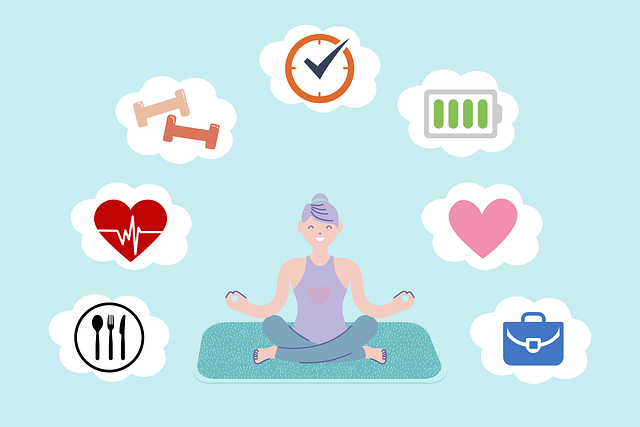Positive thinking, enhanced by ancient spiritual traditions like those offered in Lafayette Spiritual-Religious Issues Therapy, is a powerful tool for mental well-being. By practicing optimism and self-awareness, individuals can improve emotional intelligence, develop better coping strategies, and promote overall happiness. Regular positive thinking exercises, tailored to personal goals and supported by friends and family, can dramatically transform lives. This holistic approach aligns with modern Mental Health Education Programs Design goals, fostering empathy and purpose while leveraging faith or spiritual practices for resilience and inner peace.
Positive thinking exercises have emerged as a powerful tool in enhancing mental well-being. This article explores the profound impact of cultivating optimistic thoughts and offers practical strategies for implementation. From understanding the science behind positive thinking to integrating spiritual and religious elements, we provide insights tailored to individuals seeking Lafayette spiritual-religious issues therapy. By adopting these techniques, you can transform your mindset, foster resilience, and embrace a more fulfilling life.
- Understanding Positive Thinking and its Impact on Mental Well-being
- Integrating Spiritual and Religious Elements into Thought Patterns
- Practical Steps for Implementing a Positive Thinking Exercise Routine
Understanding Positive Thinking and its Impact on Mental Well-being

Positive thinking is a powerful tool that can significantly impact an individual’s mental well-being. It involves cultivating optimistic attitudes and reframing negative thoughts into more positive ones. This simple yet profound practice has deep roots in various spiritual and religious traditions, such as those explored in Lafayette’s rich tapestry of spiritual-religious issues therapy. By embracing positive thinking, individuals can enhance their emotional intelligence, leading to better coping mechanisms and improved mental health.
Self-awareness exercises are a key component of this process, encouraging people to recognize and challenge negative thought patterns. Incorporating these practices into daily routines can foster a sense of empowerment and resilience. Mental health education programs designed with an emphasis on positive thinking have been shown to be effective in promoting emotional well-being. This approach not only helps individuals navigate life’s challenges but also contributes to overall happiness and fulfillment, making it a valuable aspect of modern therapy.
Integrating Spiritual and Religious Elements into Thought Patterns

Incorporating spiritual and religious elements into thought patterns can significantly enhance positive thinking exercises, especially when tailored for individuals exploring Lafayette Spiritual-Religious Issues Therapy. Many find solace and guidance in their faith or spiritual practices, which can be leveraged to foster resilience and well-being. By integrating these elements, therapists can offer a more holistic approach to mental health care, addressing not just the symptoms but also the underlying beliefs and values that shape an individual’s perspective.
This strategy aligns with the broader goals of Mental Health Education Programs Design, where understanding one’s spiritual or religious identity is crucial for developing effective conflict resolution techniques. Social Skills Training can also benefit from this integration, as it encourages individuals to cultivate a sense of inner peace and purpose, which in turn can improve their ability to navigate interpersonal interactions with empathy and compassion.
Practical Steps for Implementing a Positive Thinking Exercise Routine

Implementing a positive thinking exercise routine can transform one’s life, much like a Lafayette spiritual-religious issues therapy session. Start by identifying specific areas of your life that need improvement; whether it’s work satisfaction, personal relationships, or overall well-being. Then, set achievable goals for each area. For instance, if mood management is a priority, commit to practicing gratitude daily. This can be as simple as jotting down three things you’re thankful for before bed.
Integrate these exercises into your daily routine by allocating dedicated time slots. Consider using communication strategies to keep yourself accountable; share your goals with friends or family who can provide encouragement and support. Regularly assess your progress, adjusting your practice as needed. Remember, consistent effort is key. Even a brief period of focused positive thinking can lead to significant changes over time, just as a well-structured community outreach program implementation yields tangible benefits for participants.
Positive thinking exercises, when incorporated into daily routines, can significantly enhance mental well-being. By understanding the power of thought and exploring spiritual or religious elements, individuals in Lafayette can harness a profound tool for personal growth. The practical steps outlined in this article serve as a starting point for anyone looking to integrate more positivity into their lives. With dedication and consistent practice, these exercises have the potential to transform perspectives, fostering resilience and overall happiness. Embracing a positive mindset is a journey, and with the right tools, anyone can navigate it effectively.














